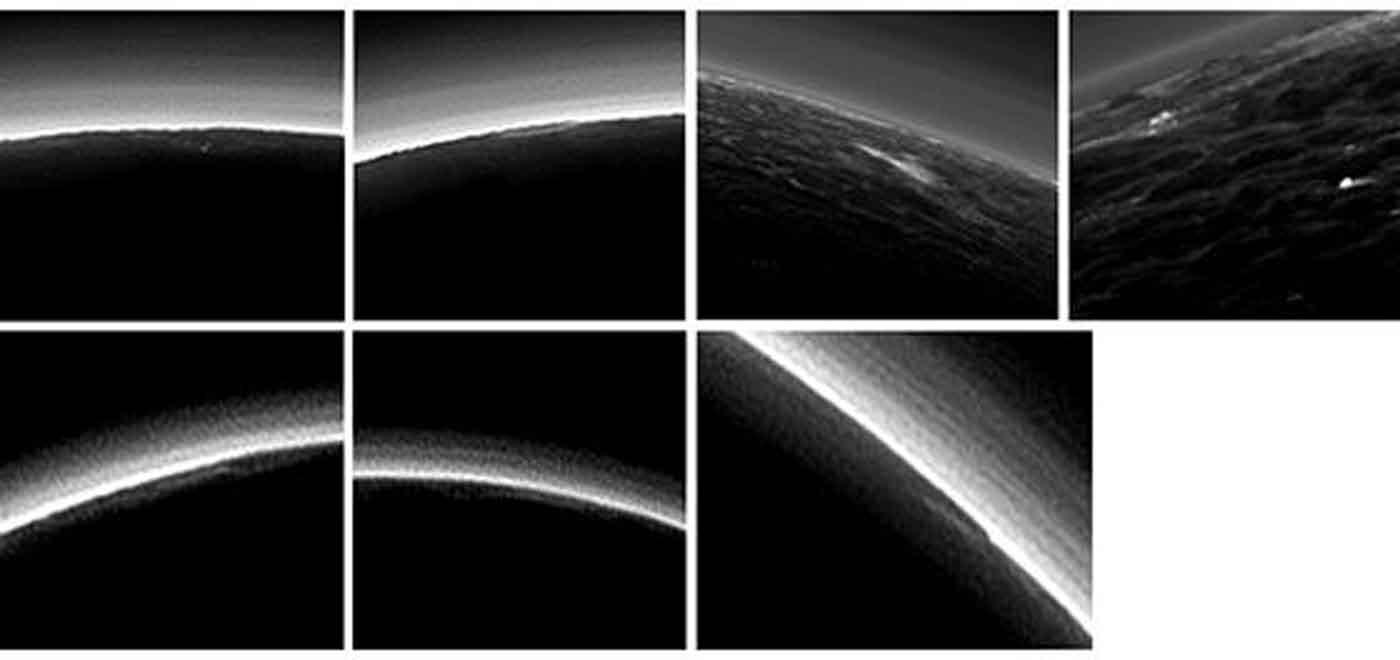Speeding away from Pluto, New Horizons looks ahead to 2014 MU69, in the Kuiper Belt.

Pluto's present, hazy atmosphere is almost entirely free of clouds, though scientists from NASA's New Horizons mission have identified some cloud candidates after examining images taken by the New Horizons Long Range Reconnaissance Imager and Multispectral Visible Imaging Camera, during the spacecraft's July 2015 flight through the Pluto system. All are low-lying, isolated small features-no broad cloud decks or fields - and while none of the features can be confirmed with stereo imaging, scientists say they are suggestive of possible, rare condensation clouds. Credit: NASA/Johns Hopkins University Applied Physics Laboratory/Southwest Research Institute
The next target for NASA’s New Horizons mission -- which made a historic flight past Pluto in July 2015 -- apparently bears a colorful resemblance to its famous, main destination.
Hubble Space Telescope data suggests that 2014 MU69, a small Kuiper Belt object (KBO) about a billion miles (1.6 billion kilometers) beyond Pluto, is as red, if not redder, than Pluto. This is the first hint at the surface properties of the far flung object that New Horizons will survey on Jan. 1, 2019.
Mission scientists are discussing this and other Pluto and Kuiper Belt findings this week at the American Astronomical Society Division for Planetary Sciences (DPS) and European Planetary Science Congress (EPSC) in Pasadena, California.
“We’re excited about the exploration ahead for New Horizons, and also about what we are still discovering from Pluto flyby data,” said Alan Stern, principal investigator from Southwest Research Institute in Boulder, Colorado. “Now, with our spacecraft transmitting the last of its data from last summer’s flight through the Pluto system, we know that the next great exploration of Pluto will require another mission to be sent there.”
Read the entire article at http://www.nasa.gov/mission_pages/newhorizons/main/index.html





